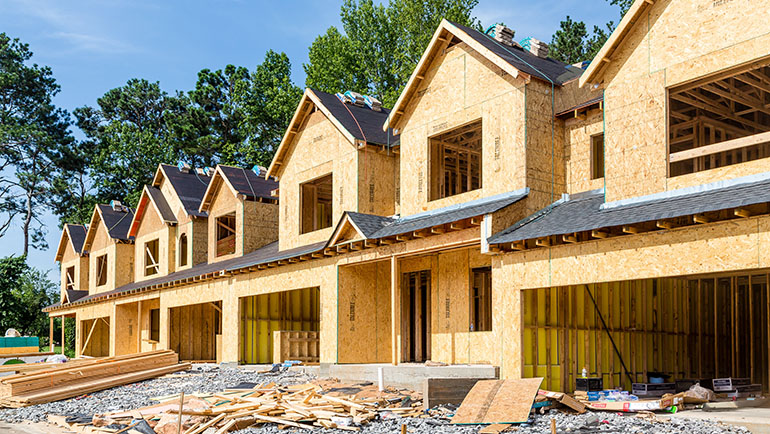Dollars for density – new market and rental homes coming due to federal funding

Homebuyers and renters looking for a place to call home will soon have more options thanks to funding announced in the 2023 Federal Budget.
The $4 billion federal Housing Accelerator Fund was created to address the housing crisis by incentivizing municipalities across Canada to build 100,000 affordable new homes.
Funding is available to municipalities that commit to creating affordable missing middle housing – rowhouses, triplexes, fourplexes, cottage homes and small apartment buildings near transit.
Building affordable homes
Municipalities must use the funds to increase the supply of affordable market and rental housing by:
- reviewing restrictive, exclusionary zoning that limits development to unaffordable, large-lot single-family neighbourhoods lacking services and transit;
- eliminating restrictions such as those around height, setbacks and building floor area to build a greater variety of housing types, including secondary suites and laneway homes;
- adopting zoning for affordable missing middle market and rental housing geared to lower- and middle-income earners, including young families and seniors;
- reduce or eliminate parking standards; and
- hiring staff to speed up permitting.
Making land available
Canada Mortgage and Housing (CMHC) is providing a list of best practices for municipalities applying for funding.
For example, municipalities could show they’re making municipal land available for housing by rezoning city-owned and managed land such as residential, commercial, retail, and industrial land including golf courses, houses, and buildings.
Encouraging transit
Municipalities can also show they’re encouraging transit use. Public transit can help tackle Canada’s housing crisis, according to a new report from the Canadian Urban Transit Authority (CUTA).
The report looks at the role of public transit in shaping housing development, improving affordability, and reducing greenhouse gas emissions. It also presents policy recommendations to federal, provincial, and municipal governments and transit agencies.
Similar to CMHC’s best practices for encouraging missing middle housing, CUTA’s recommendations include:
- making land available;
- changing legislation to permit land banking within 800 metres of a transit station or transit corridor;
- passing enabling legislation for municipalities to address speculation in areas with new transit investments; and
- establishing an 800-metre buffer around key transit stations and high frequency transit corridors for housing and supporting infrastructure.
The goal is to have all levels of government and the private sector working together to create more affordable, sustainable communities.
CUTA also recommends:
- implementing a GST/HST and PST tax rebate for purpose-built rentals and non-market housing within TOD (transit-oriented development) areas;
- streamlining processes with dedicated planning staff to accelerate the approval of TOD development applications; and
- passing legislation to require municipalities to designate TOD areas.
If you have questions about the Federal Housing Accelerator Fund, or CMHC or CUTA recommendations, please contact Harriet Permut, director of government relations at hpermut@rebgv.org.
- Learn about the Housing Accelerator Fund.
- Read CUTA's report, Housing is on the Line: How public transit can help tackle Canada’s housing crisis. (opens 63-page pdf)
- Read a summary backgrounder of the Housing is on the Line report. (opens 3-page pdf)